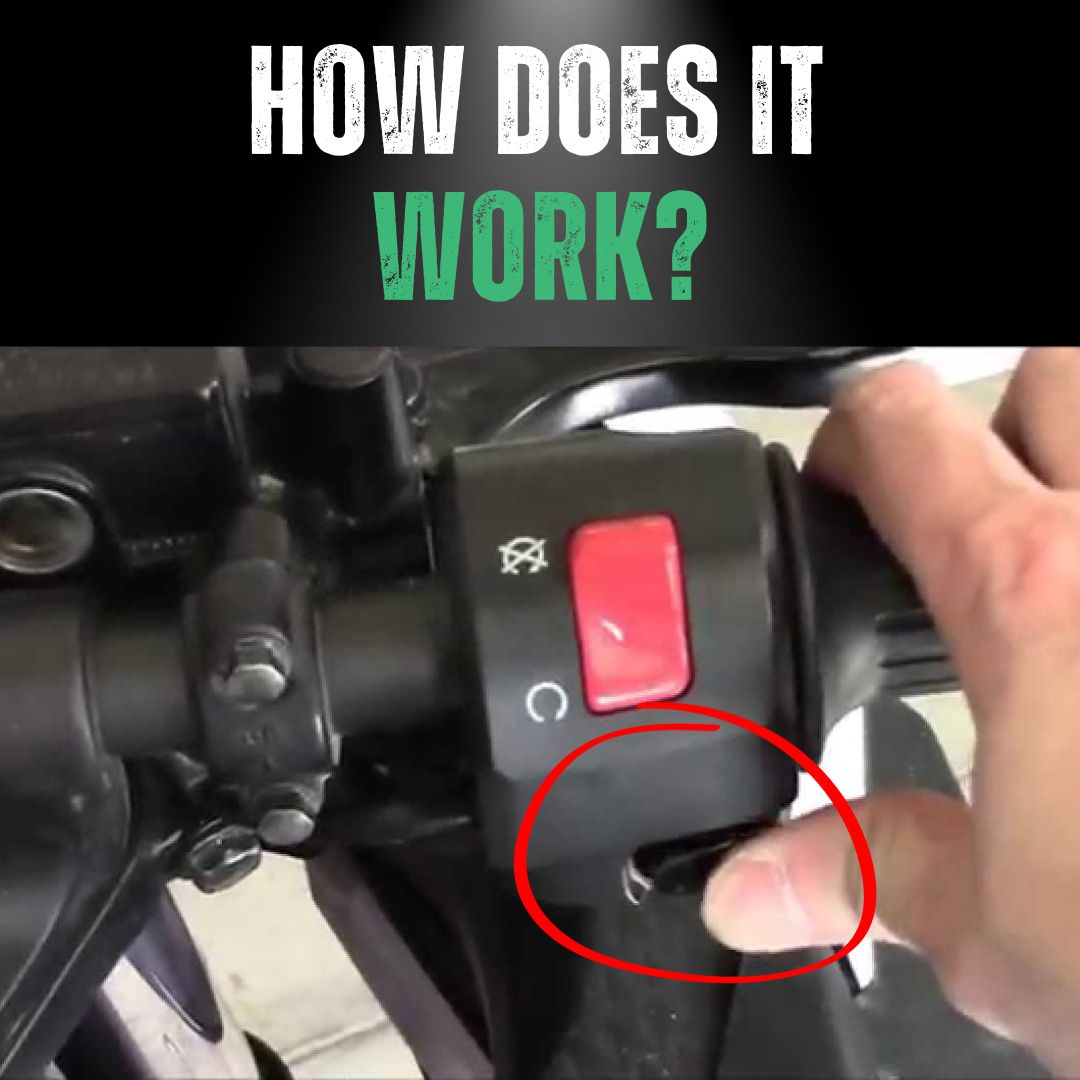
Published: 8.11.23 | Updated: 3.20.25
How Does a Motorcycle Kill Switch Work?
Ever wondered how a tiny button on your motorcycle could save your life? Meet the kill switch – a rider’s unsung hero.
This small but mighty feature offers instant control in emergencies, blending safety with the thrill of the ride. Let’s explore how it works and why it’s a must-know for every motorcyclist.
Table of Contents
- What is a Motorcycle Kill Switch?
- Understanding the Kill Switch Mechanism
- Legal and Safety Regulations
- The Role of the Kill Switch in Safety
- Technical Insight: Ignition and Kill Switch
- Evolution of the Kill Switch
- Best Practices for Using It
- Common Issues with Kill Switches
- Maintenance and Troubleshooting
- In Summary
- FAQs
What is a Motorcycle Kill Switch?
A motorcycle kill switch is a safety feature designed to cut the engine’s power instantly. By interrupting the electrical circuit from the ignition system, it stops combustion, allowing an immediate shutdown without harming the engine.
It’s a simple yet critical tool, often overlooked until it’s needed most.
Understanding the Kill Switch Mechanism
How does a kill switch bring your roaring bike to a silent stop?
Located within thumb’s reach on the handlebars, it halts the electrical flow to the ignition system – like flipping off a light switch. The engine fades to silence in an instant.
Watch this video to see the kill switch in action.
Unlike turning off the ignition key, which takes time, the kill switch is built for split-second accessibility.
Legal and Safety Regulations Surrounding Kill Switches
Safety is king on the open road, and the kill switch is a key player.
In many places, it’s not just a suggestion – it’s the law. Lawmakers and regulators agree: the ability to cut the engine instantly is non-negotiable.
In the EU, the Whole Vehicle Type Approval (WVTA) mandates an emergency engine cut-off. In the US, the NHTSA sets similar standards.
Regulations by Region
| Region | Kill Switch Requirement | Additional Safety Measures |
|---|---|---|
| UK | Mandatory | ABS for bikes >125cc |
| EU | Mandatory (WVTA) | Daytime Running Lights |
| US | Mandatory (NHTSA) | Varies by state |
| California | Mandatory | Lane splitting permitted |
Stats drive the point home: in Greater Manchester, 2,629 motorcycle casualties since 2014, including 76 fatalities, underline the need for safety tools like the kill switch.
The Role of the Kill Switch in Motorcycle Safety

Why does this tiny button matter so much?
In an accident, it can stop a riderless bike from causing chaos. It’s a safety net that protects you and others on the road.
Technical Insight: The Ignition System and the Kill Switch
The ignition system sparks your engine to life. The kill switch? It snuffs it out.
When flipped, it cuts power to the ignition coil, stopping the spark plug – and the engine – dead in its tracks.
Evolution of the Motorcycle Kill Switch
From crude pull-cords in the early days to today’s sleek, thumb-friendly buttons, the kill switch has evolved with motorcycles.
Modern designs are waterproof, dustproof, and even smart – some now auto-engage during a crash.
Best Practices for Using a Motorcycle Kill Switch
See how experts recommend using the kill switch.
It’s an emergency tool, not an everyday off switch. Overuse can drain your battery or flood the engine.
How to Test Your Kill Switch in 5 Minutes
- Start your bike.
- Flip the kill switch to “off.”
- Ensure the engine stops instantly.
- Check for debris or wear.
- Turn off the ignition key to finish.
Common Issues with Kill Switches
Intermittent Functionality
If your switch works inconsistently, check for corrosion or loose wires. A quick clean might fix it.
Won’t Start?
A stuck switch could be the culprit. Toggle it a few times or inspect the wiring.
Maintenance and Troubleshooting

Dust and moisture can jam your kill switch. Regular cleaning and checks keep it ready.
If it fails, use a multimeter to test connections – or call a pro.
In Summary
The kill switch is a small hero with a big job: shutting down your engine fast and safely. Mastering it is key to responsible riding.
FAQs
Click the questions below to reveal answers about motorcycle kill switches!
What is the primary function of a kill switch on a motorcycle?
It’s an emergency stop that instantly cuts the engine’s power, keeping you safe in critical moments.
Can using the kill switch damage the electrical system?
No, it’s safe for emergencies. But using it routinely instead of the key might strain the battery.
Is there a recommended routine check for a kill switch?
Yes, test it monthly: flip it while the engine’s running to ensure it works, and clean away debris.
How does a kill switch enhance rider safety?
It stops the engine if you fall, preventing a runaway bike and reducing accident risks.
Are kill switches mandatory worldwide?
Not everywhere, but they’re required in places like the EU, UK, and US for safety compliance.
What’s the difference between a kill switch and ignition key?
The kill switch is faster and more accessible in emergencies; the key is for regular shutdowns.
Get in Touch
Curious about motorcycle safety for kids? Check out our ride-on motorbikes with built-in safety features – perfect for young riders!





Share:
Should I Buy A Kids Ride On Car Or A Kids Ride On Go Kart?
7 Common Motorcycle Blind Spot Mistakes